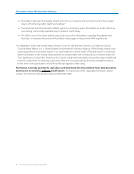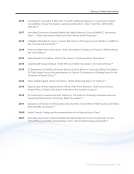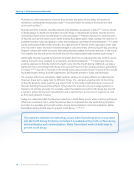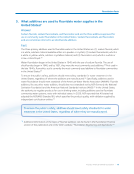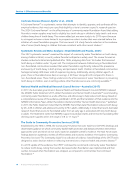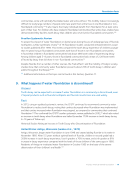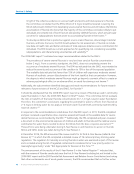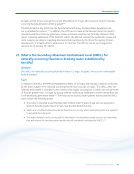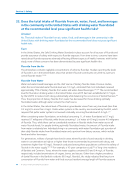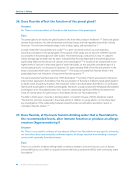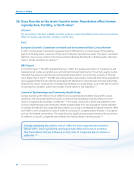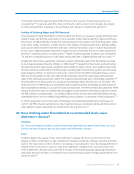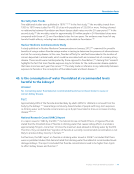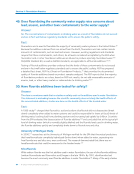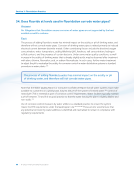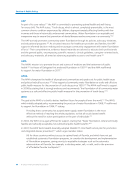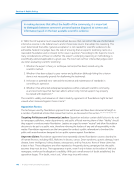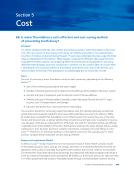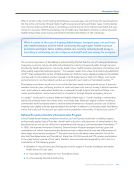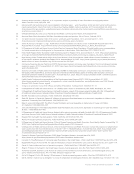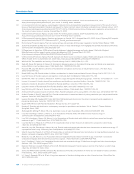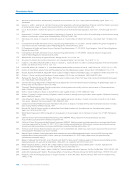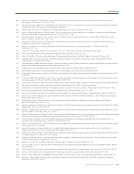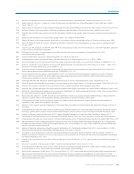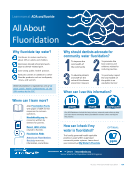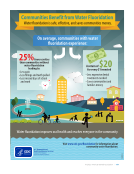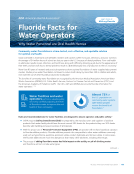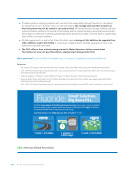© 2025 American Dental Association l 77
Fluoridation Facts
Mortality Rate Trends
Two additional studies were published in 1978.279,280 In the first study,279 the mortality trends from
1950 to 1970 were studied for 473 US cities with populations of 25,000 or more. Findings showed
no relationship between fluoridation and heart disease death rates over the 20-year period.279 In the
second study,280 the mortality rates for approximately 30 million people in 24 fluoridated cities were
compared with those of 22 non-fluoridated cities for two years. No evidence was found of any
harmful health effects, including heart disease, attributable to fluoridation.280
Nuclear Medicine Communications Study
A study published in Nuclear Medicine Communications in January 2012355 examined the possible
benefits of using a sodium fluoride isotope marker in testing to determine the presence of atherosclerosis
and risk for coronary disease. In this case, fluoride’s affinity for calcified tissue aided in the location of
calcium deposited in arterial walls, which could be associated with an increased risk of coronary artery
disease. These results were misinterpreted by those opposed to fluoridation,356 claiming that “research
highlights the fact that mass fluoride exposure may be to blame for the cardiovascular disease epidemic
that takes more lives each year than cancer.”356 The study made no reference to any relationship between
exposure to fluoride or the consumption of fluoridated water and heart disease.355
45. Is the consumption of water fluoridated at recommended levels
harmful to the kidneys?
Answer
No. Consuming water fluoridated at recommended levels has not been shown to cause or
worsen kidney disease.
Fact
Approximately 60% of the fluoride absorbed daily by adults (45% for children) is removed from the
body by the kidneys.221 Several large community-based studies of people with long-term exposure
to drinking water with fluoride concentrations up to 8 ppm have failed to show an increase in kidney
disease.186,310,357
National Research Council (NRC) Report
In a report issued in 1993 by the NRC,25 the Subcommittee on Health Effects of Ingested Fluoride
stated that the threshold dose of fluoride in drinking water that causes kidney effects in animals is
approximately 50 ppm–more than 12 times the maximum level allowed in drinking water by the EPA.
Therefore, they concluded that “ingestion of fluoride at currently recommended concentrations is not
likely to produce kidney toxicity in humans.”25
Furthermore, the NRC report on fluoride in drinking water issued in 200626 concluded that there
were no published studies that demonstrated that drinking water fluoridated at recommended levels
damages kidneys. The report concluded that fluoride concentrations need to be higher than 4 ppm
to affect kidney tissues and function.26
Fluoridation Facts
Mortality Rate Trends
Two additional studies were published in 1978.279,280 In the first study,279 the mortality trends from
1950 to 1970 were studied for 473 US cities with populations of 25,000 or more. Findings showed
no relationship between fluoridation and heart disease death rates over the 20-year period.279 In the
second study,280 the mortality rates for approximately 30 million people in 24 fluoridated cities were
compared with those of 22 non-fluoridated cities for two years. No evidence was found of any
harmful health effects, including heart disease, attributable to fluoridation.280
Nuclear Medicine Communications Study
A study published in Nuclear Medicine Communications in January 2012355 examined the possible
benefits of using a sodium fluoride isotope marker in testing to determine the presence of atherosclerosis
and risk for coronary disease. In this case, fluoride’s affinity for calcified tissue aided in the location of
calcium deposited in arterial walls, which could be associated with an increased risk of coronary artery
disease. These results were misinterpreted by those opposed to fluoridation,356 claiming that “research
highlights the fact that mass fluoride exposure may be to blame for the cardiovascular disease epidemic
that takes more lives each year than cancer.”356 The study made no reference to any relationship between
exposure to fluoride or the consumption of fluoridated water and heart disease.355
45. Is the consumption of water fluoridated at recommended levels
harmful to the kidneys?
Answer
No. Consuming water fluoridated at recommended levels has not been shown to cause or
worsen kidney disease.
Fact
Approximately 60% of the fluoride absorbed daily by adults (45% for children) is removed from the
body by the kidneys.221 Several large community-based studies of people with long-term exposure
to drinking water with fluoride concentrations up to 8 ppm have failed to show an increase in kidney
disease.186,310,357
National Research Council (NRC) Report
In a report issued in 1993 by the NRC,25 the Subcommittee on Health Effects of Ingested Fluoride
stated that the threshold dose of fluoride in drinking water that causes kidney effects in animals is
approximately 50 ppm–more than 12 times the maximum level allowed in drinking water by the EPA.
Therefore, they concluded that “ingestion of fluoride at currently recommended concentrations is not
likely to produce kidney toxicity in humans.”25
Furthermore, the NRC report on fluoride in drinking water issued in 200626 concluded that there
were no published studies that demonstrated that drinking water fluoridated at recommended levels
damages kidneys. The report concluded that fluoride concentrations need to be higher than 4 ppm
to affect kidney tissues and function.26










